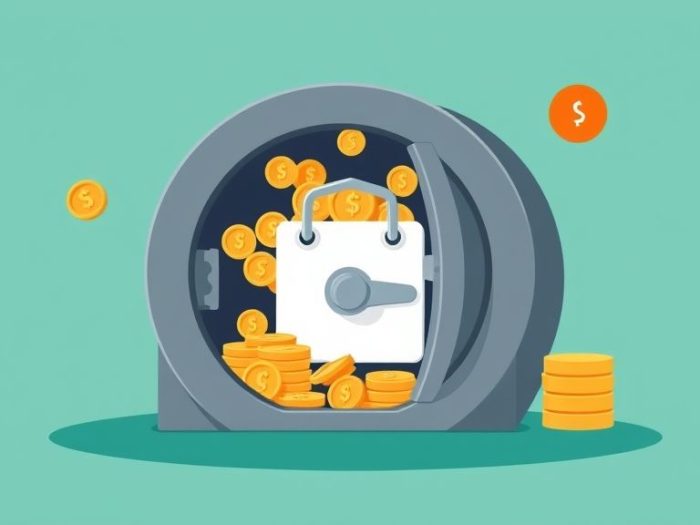Having a solid emergency fund is crucial for financial stability. Unexpected
events, such as medical bills, car repairs, or job loss, can derail your
finances if you’re not prepared. This article provides a step-by-step guide on
how to build a $10,000 emergency fund in 6 months.
Understanding the Importance of an Emergency Fund
An emergency fund acts as a financial safety net, providing a cushion to cover
unexpected expenses without resorting to debt. It reduces stress and allows you to
weather financial storms.
Why $10,000?
$10,000 is a substantial amount that can cover a wide range of emergencies.
However, the ideal size of your emergency fund depends on your individual
circumstances, such as:
-
Monthly Expenses: Aim to cover 3-6 months of essential living
expenses. -
Job Stability: If your job is less stable, consider a larger
fund. -
Health Conditions: Pre-existing health conditions may warrant
more savings.
Step-by-Step Guide: Building $10,000 in 6 Months
1. Assess Your Current Financial Situation
Start by understanding your income, expenses, and existing savings.
-
Calculate Monthly Income: Determine your net monthly income
after taxes. -
Track Monthly Expenses: Identify your essential and
non-essential expenses. -
Evaluate Existing Savings: Determine how much you already have
in savings.
2. Create a Realistic Budget
Develop a budget that allows you to save a significant portion of your income.
-
Identify Non-Essential Expenses: Cut back on unnecessary
spending (e.g., dining out, entertainment). -
Reduce Essential Expenses: Look for ways to lower your essential
costs (e.g., groceries, utilities). -
Allocate Savings Goal: Determine how much you need to save each
month to reach $10,000 in 6 months.
3. Calculate Monthly Savings Goal
To save $10,000 in 6 months, you need to save approximately $1,667 per month.
Adjust this amount based on your existing savings.
4. Increase Income (Optional but Recommended)
Increasing your income can significantly accelerate your savings progress.
-
Side Hustle: Consider a part-time job, freelancing, or other
income-generating activities. -
Negotiate Salary: If possible, negotiate a raise at your current
job. - Sell Unused Items: Sell items you no longer need or use.
5. Automate Your Savings
Automate your savings to ensure consistent contributions.
-
Set Up Transfers: Schedule automatic transfers from your checking
account to your savings account each month. -
Direct Deposit: If possible, have a portion of your paycheck
directly deposited into your savings account.
6. Choose the Right Savings Account
Select a high-yield savings account (HYSA) to maximize interest earned.
-
Compare Interest Rates: Look for the best interest rates
available. -
Consider Accessibility: Ensure easy access to your funds in
case of an emergency. -
Check for Fees: Avoid accounts with monthly fees or minimum
balance requirements.
7. Track Your Progress
Monitor your savings progress regularly to stay motivated and make adjustments as
needed.
-
Use a Spreadsheet: Create a spreadsheet to track your income,
expenses, and savings. -
Set Reminders: Set reminders to review your progress and make
necessary changes.
8. Stay Disciplined and Consistent
Consistency is key to achieving your savings goal. Avoid dipping into your
emergency fund unless it’s a true emergency.
Example Timeline
(This is a simplified example. Adjust based on your income and expenses.)
- Month 1: Assess finances, create a budget, automate savings.
- Month 2: Reduce expenses, start a side hustle.
- Month 3: Track progress, adjust budget if needed.
- Month 4: Negotiate salary, sell unused items.
- Month 5: Continue saving, review HYSA options.
- Month 6: Reach $10,000 goal, celebrate!
Important Considerations
-
Flexibility: Be prepared to adjust your plan if unexpected
expenses arise. -
Prioritization: Make building your emergency fund a top
priority. -
Motivation: Stay focused on your goal and visualize the benefits
of having an emergency fund.
Conclusion
Building a $10,000 emergency fund in 6 months is a challenging but achievable
goal. By following these steps, creating a realistic budget, and staying
disciplined, you can establish a strong financial foundation and protect
yourself from unexpected financial setbacks.
Related Keywords
Build emergency fund, save $10,000, emergency fund plan, 6-month emergency fund,
fastest way to save money, financial emergency, high-yield savings account,
budgeting tips, side hustle, financial stability.
Frequently Asked Questions (FAQ)
1. Why is an emergency fund important?
An emergency fund provides a financial safety net to cover unexpected
expenses and avoid debt.
2. How much should I save in an emergency fund?
A general guideline is to save 3-6 months of essential living expenses,
but it depends on individual circumstances.
3. What are the first steps to building an emergency fund?
The first steps are to assess your current financial situation, including
income, expenses, and existing savings.
4. How can I create a realistic budget for saving?
Create a budget by identifying non-essential expenses, reducing essential
expenses, and allocating a specific savings goal.
5. Is increasing income necessary to build an emergency fund quickly?
Increasing income through a side hustle or salary negotiation can
significantly accelerate your savings progress.
6. Why is automating savings important?
Automating savings ensures consistent contributions and helps you stay
disciplined.
7. What type of account is best for an emergency fund?
A high-yield savings account (HYSA) is recommended to maximize interest
earned while keeping your funds accessible.
8. How should I track my savings progress?
Track your progress using a spreadsheet or setting reminders to review your
savings regularly.
9. What are the biggest challenges in building an emergency fund?
Challenges include staying disciplined, adjusting your plan for unexpected
expenses, and prioritizing savings.
10. Is building a $10,000 emergency fund in 6 months realistic for everyone?
While achievable, it depends on individual circumstances. Adjust the
timeline and savings goals to fit your financial situation.



